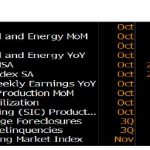What do we want? Income! When do we want it? Now! And quarterly, on a perpetual, tax-advantaged basis, please. You can find a surprising number of high-yielding stocks out there. Plenty sport double-digit yields, even. And it can be tempting to buy in.
Unfortunately, most of these are going to be in the too-good-to-be-true category (dividends about to be cut, distressed or highly leveraged companies, or one-time payouts that make the yield look larger than it normally is). But say you’ve done some investigating and found a few high-yielders that look tempting. Maybe you have looked through a firm’s most recent 10-year history of dividend payments and found that it has a great track record in this regard.
But that might not be enough history. It has been nearly 10 years since the last recession. The real question is, what will happen during the next downturn? Even if you go back further, well–that was then, and this is now. We can be pretty certain about the past, but it is no guarantee of future results, like it says in the fine print.
Can you protect yourself against dividend income collapse? We think so. We have a few words of advice–and some investment ideas to get you started.
1. Diversify, diversify, diversify–by sector. Certain business sectors lend themselves more to paying dividends or distributions than others, so you won’t be able to diversify entirely if you’re looking for income. (Income generation in retirement is a favorite topic of ours.) But there’s more to income generation than the usual suspects like oil companies, utilities, and real estate investment trusts.
2. Don’t stop at dividend yield. Look at dividend growth as well. You’ll add not just diversification but the potential for stronger growth in your portfolio’s yield over time. Firms like Starbucks and Microsoft (which you’ll see on the list below) are great examples. These are companies that have been around for decades and are household names, but somewhat new to making dividend distributions. Even so, they are increasing their distributions at a pretty fast clip. With high-revenue-growth years mostly behind them, they’re paying out a higher percentage of free cash flow to shareholders instead of plowing it back into the business. These investments will lower your portfolio’s overall yield on a percentage basis, but they should make up for it with dividend growth.













Leave A Comment